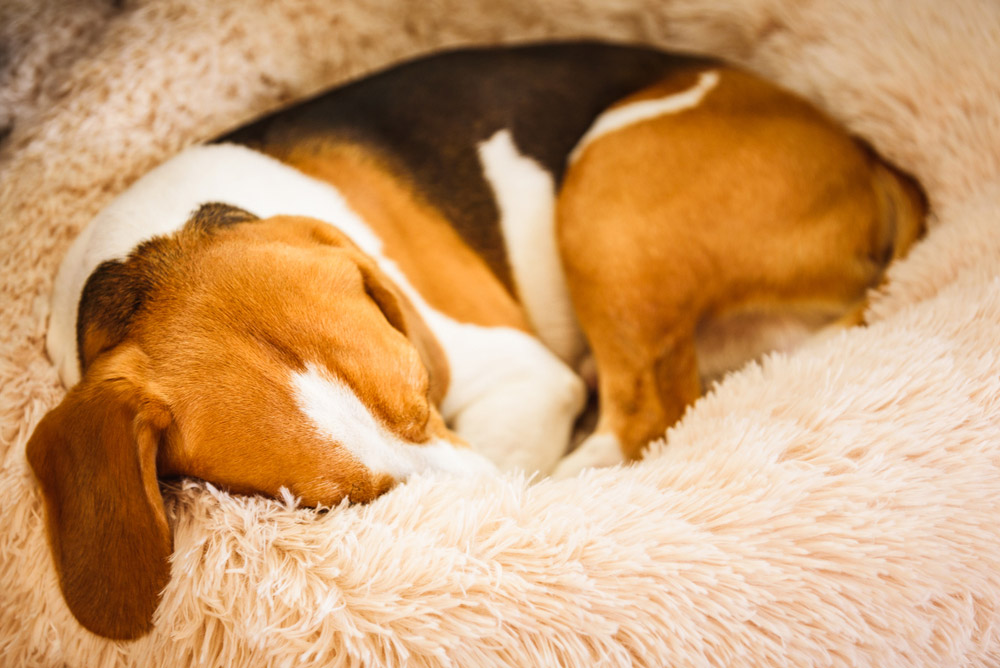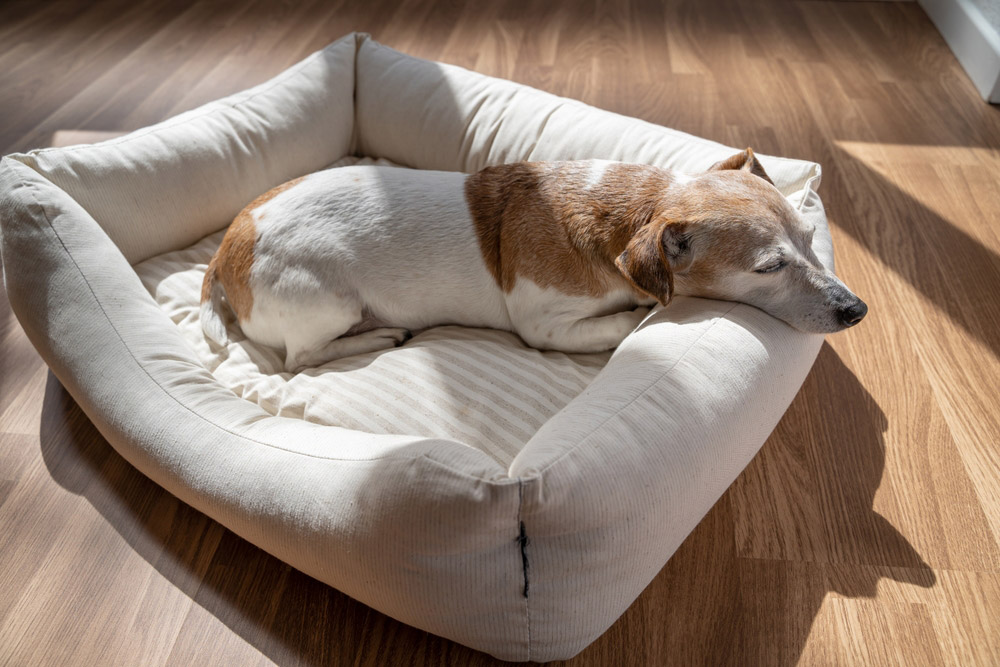Getting the right bed for your pet is a big deal, and we’re certain you can relate. It can make the difference between tossing and turning versus a restful night’s sleep. Dogs also want a comfy place to lie down, which is one reason they circle before settling in for a snooze. Besides, canines sleep a lot longer than we do, at 10 to 12 hours daily. So, a comfy bed is a must-have.
Our pets have come a long way from tramping down the grass to making a good place to rest. They have it pretty darn good with the many bed choices to accommodate any canine need. Thankfully, our tips below cover everything you should know before buying a bed for your pup to make an informed decision.

The 13 Tips for Choosing a Comfy Dog Bed
1. Match Your Dog’s Sleeping Style With the Right Shape
Some people like to sleep on their sides, while others sleep on their backs. Dogs also have their preferred sleeping style. Some pups like to stretch out their full body length, while others want to curl up into a tight ball. Therefore, we suggest observing how your pet sleeps to get the correct type of bed to match their habits. If, for example, your dog likes to sleep in a tight ball, then they might prefer a bed that wraps around them, like a bolster bed. Meanwhile, a dog that likes to sleep stretched out might want something large and flat to sleep on.


2. Get the Correct Size
Always consider your dog’s size and how they will fit before buying a bed. Again, watching how your pet sleeps can get you in the ballpark. Pulling out a tape measure to get the length is crucial. You should even add another foot to the figure to give your dog some leeway in case they want to stretch. The size also applies to the place you plan to put the bed. If in doubt, measure to fit the space. If your dog is in between sizes, go up the next one to play it safe.
3. Consider the Fill Type
The fill type can profoundly impact the bed’s comfort. While a standard poly fiberfill material can work just fine for small breeds that won’t wear it down too much over time, a memory foam pad might be ideal for larger dogs or dogs with joint issues. Consider your dog’s weight and overall health and really consider if the fill of the bed you’re considering is going to offer them the support they need.


5. Choose a Wraparound or Bolster Bed for Security
Some dogs are leaners, meaning they want to rest their body against something because it feels comfortable and provides a sense of security. These beds provide all-around support to accommodate their sleeping style. They can also keep your pooch warm on a chilly night, especially if you opt for a cover material made of sherpa, chenille, or fleece.
6. Buy a Bed with a Removable, Machine-Washable Cover
It’s not a matter of if you must wash your dog’s bed; it’s when. Some beds only allow you to spot-clean them, but we prefer products with a removable, machine-washable cover. They offer the best value and make cleaning up stains and bad odors much easier. If you can’t find a good option that allows you to wash the entire bed itself, try to stick with those that at least have replacement covers. A water-resistant or weather-proof cover is another wise choice.


7. Look for Added Support for an Arthritic Pet
Manufacturers also sell products specifically designed for arthritic pets with orthopedic foam. They’ll help your dog feel more comfortable and get better sleep with the added support. These products often have other features that are suitable for these animals. Give the fill type some thought since it can make the difference between your pooch using their bed versus yours.
8. Consider a Low-Profile Lounger Bed for Senior Pets
We recommend choosing a bed with a low profile for senior pets or those with joint issues. These products don’t have a high side your dog has to step over to lay down. Instead, it’s a manageable walk into their bed, leading to restful sleep. They are also an excellent choice for dogs that like to stretch out when they rest.


9. Wait Until Your Puppy Has Grown Out of Their Chewing Phase
You can opt for something more affordable for your puppy as they go through their chewing phase. The chances are you’d have to buy another bed anyway once they reach full size. However, you can get something you won’t mind having to replace until you can splurge when they’re older and less inclined to destroy their belongings.
10. Buy a Bed Designed for Chewers
Manufacturers produce chew-resistant beds. However, they can only go so far on this score without making them uncomfortable. They often have features like hidden handles and ripstop nylon to reduce damage. We suggest checking the warranty on these products. Reputable sellers will stand behind these claims. However, make sure to read the fine print.
Bonus Tips to Consider When Buying a Dog Bed


11. Provide Adequate Exercise and Stimulation for Your Pup
This tip and the following one address the longevity of your dog’s bed. A dog is more likely to chew things if they’re bored. Ensuring your pet gets adequate exercise can help prevent destructive behavior like chewing on the bed. The last thing you want is for it to become a big chew toy. Exercise will make sure your pooch uses the bed for its intended purpose instead of a way to prevent boredom. Likewise, sufficient mental stimulation and enrichment will help prevent your dog from taking out their boredom on their bed as well.
12. Get One Bed Per Pet
Scientists theorize that one reason dogs circle before lying down is to mark their territory. The patted-down grass visually communicates this fact. We’ll take this info one step further and suggest you get one bed per pet. It coincides with this instinctive behavior and can give your pet a sense of security by having their own space. It may also prevent fights over which pet gets which bed. Plus, having your dogs share a bed means that it’s going to wear down a lot faster, meaning you’ll spend more money replacing their beds in the long run.


13. Teach Your Pup to Use the Bed
It would be a shame if your dog didn’t use the bed after you’ve researched and looked for the right product. We suggest using treats to help your dog make positive associations with it. A pheromone spray may also pique your pet’s curiosity about the new item in their home. Essentially, you want to create a positive association with the bed so that your dog feels eager to use it.


Conclusion
Getting a comfy bed for your pet is easy once you know what to look for in a product. Luckily, you’ll find many choices to fit the bill, no matter what unique needs your pup has. Just be sure that you really take the time to consider how your dog sleeps and if the bed style and design are suitable for your dog’s size, comfort, and overall well-being.
Featured Image Credit: eva_blanco, Shutterstock






